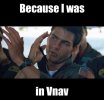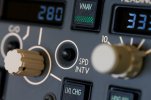Not exactly. The NG and the MAX have both speed and altitude intervention. I think the NGs were built for it but you had to pay for it. some of ours the button is covered up.
So if you’re on a STAR in VNAV Path and ATC gives you a new speed, you hit the button, throw in the speed, and you go into VNAV Speed. No legs page, no descent page. You can immediately put in the speed, and then go mess with the box to put the new assigned speed into the legs peg or descent page as necessary, and then go close the speed intervene window, and it will remain in VNAV Speed until it recaptures the Path.
Altitude intervene is an easy way to recruise to a new altitude or double clicking it to delete an altitude restriction in the box.
Anecdotally, the handful of times I flew the MAX, if you have a tailwind it has a very difficult time maintaining the path and if you get a late descent for whatever reason it doesn’t catch up very well at wall. Lots of level change and V/S on the STAR, asking ATC for altitude relief, and we hit the bottom altitude maybe a mile prior. Other than that, very fun to hand fly, and the PTT button on the glare shield, 756 style, was great, as was the second cup holder.




